Terraforming Mars
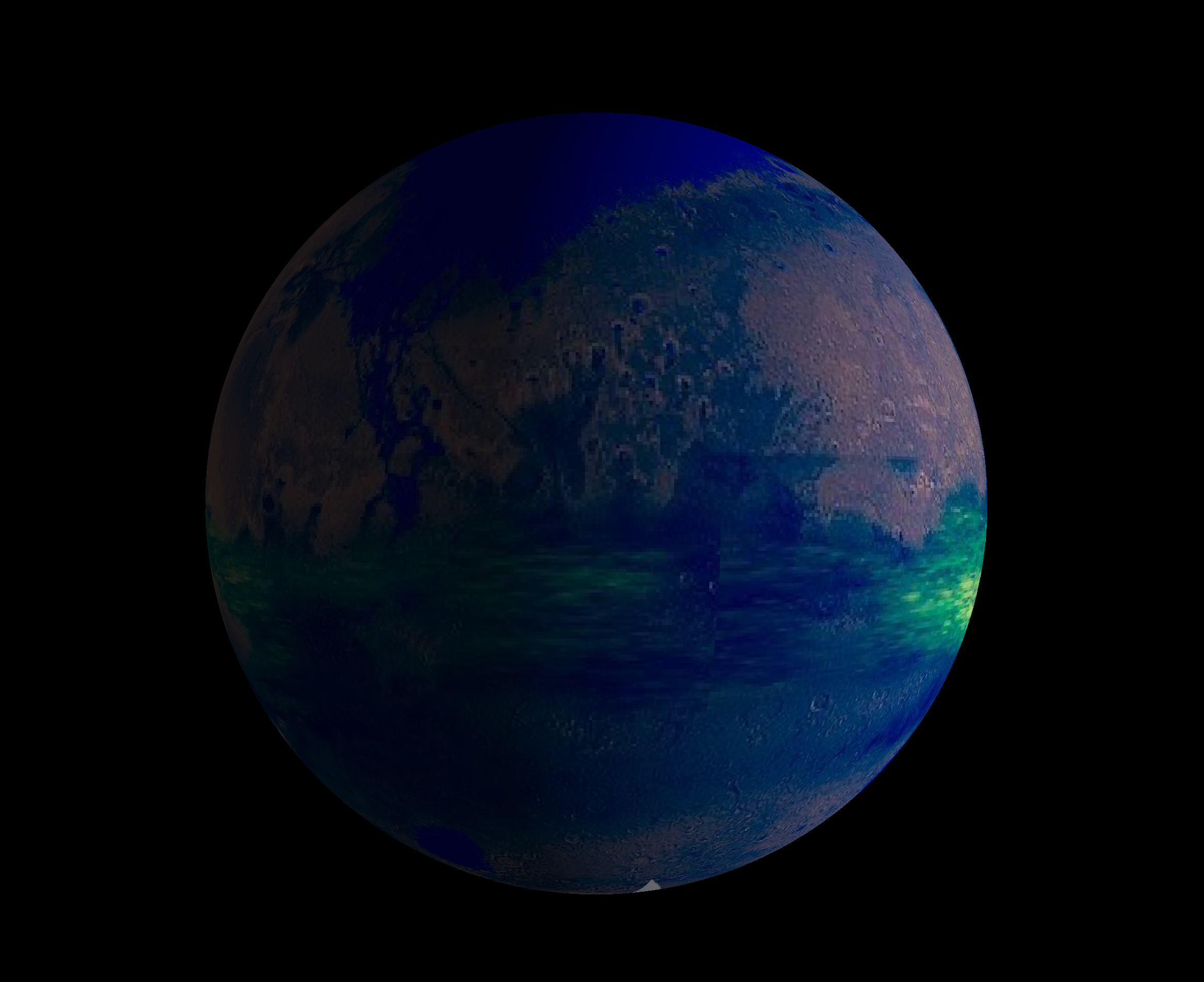
The terraforming of Mars has been debated for a long time. Recently the “goal” of emigration to Mars has been put into practice with Elon Musk’s declaration, which has started the debate again.
I think there are several steps when thinking about terra forming. First of all, should we do it? Is it worth doing? At this stage of the discussion, the issue of “planetary protection” should be discussed. Is it ok to bring organisms, including bacteria, from Earth to Mars?
At the same time, we have to think about whether or not it can be done. Atmospheric pressure, water, and plants are the keys to whether terraforming becomes feasible. Is there enough volatile substance (source of atmosphere (CO2, Nitrogen, etc) on Mars to accomplish sufficient atmospheric pressure for liquid-phase water? And is there enough “H2O”? Can it change the surface environment? Also, the “magnetosphere” that exists on Earth protects the Earth’s atmosphere from the solar wind, but Mars has no magnetic field. Furthermore, if atmospheric pressure and liquid water are brought about, will plants from the earth be able to grow? Even if that is possible, what kind of technology would be required and how much time and money would it cost?
Along with the above questions, the stage of migrating Mars can begin. It will start with a small colony, but it requires the construction of a system to maintain a certain size population – say 150. They have to be self-sufficient in food and energy, and what is needed for that? And beyond that, a debate about the construction of a “Mars City” may begin.
And for that reason, the following discussion about “gravity” cannot be avoided.
(Y.A.Yamashiki)
Space Architecture with Centrifugal Force
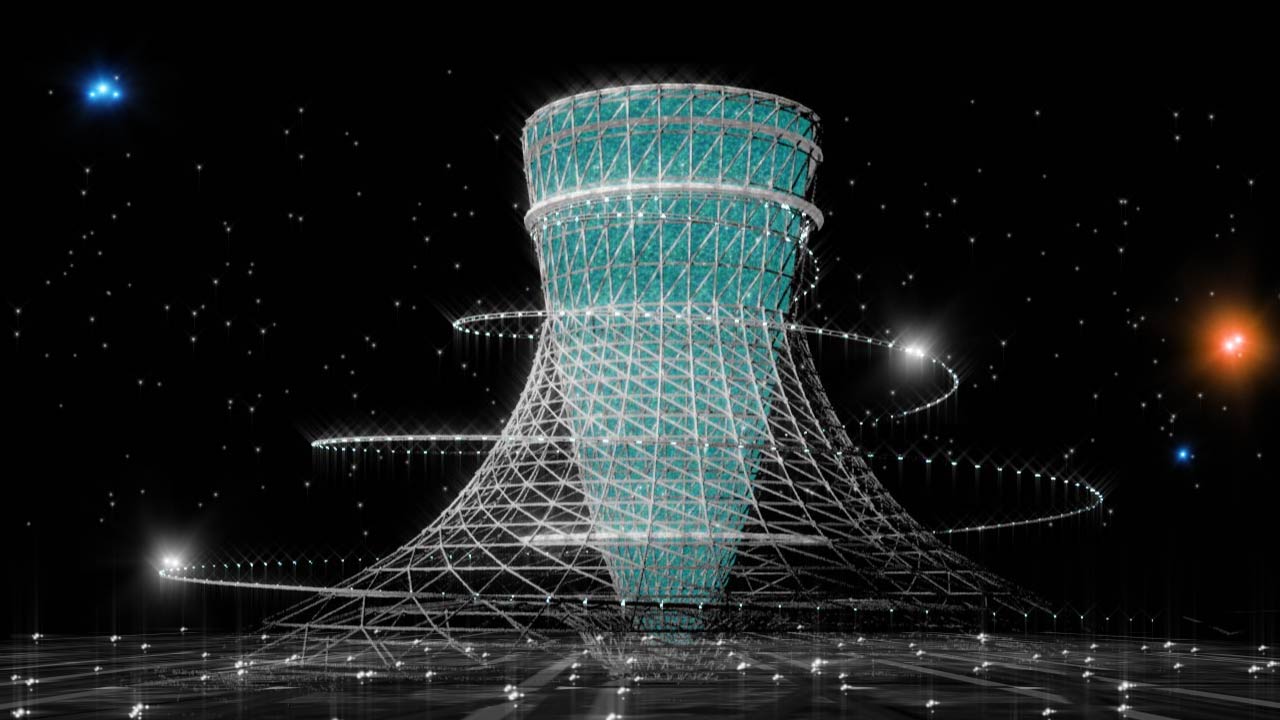
The long-term exposure to microgravity environments is known to have adverse effects on mammals, from fertilization through birth to growth. We, therefore, propose various architectural designs of “rotating artificial gravity facilities” to reproduce Earth-like (1G) gravitational environments on the surfaces of a celestial body, as well as during long spaceflight periods. When the rotation speed of a wine glass is increased on a celestial body whose gravitational acceleration is less than 1G such as the moon, the resultant acceleration, which is the combination of gravitational acceleration Gmoon (<1G) of a celestial body and acceleration based on centrifugal force, becomes 1G at a point. In the design process, the resultant acceleration is considered an apparent gravitational acceleration. We propose that these facilities will become indispensable for future human generations to be able to give birth and raise children during the early phases of Solar System colonization. For the transportation systems between artificial gravity facilities, we propose the usage of side rails on guided tracks because minimal energy would be consumed during operations. Furthermore, using the side rails on guided tracks would reduce the exposure to hazardous dust particles on the Moon. When used as international hubs, artificial gravity facilities are expected to promote the unity of humankind.
(Takuya Ono)
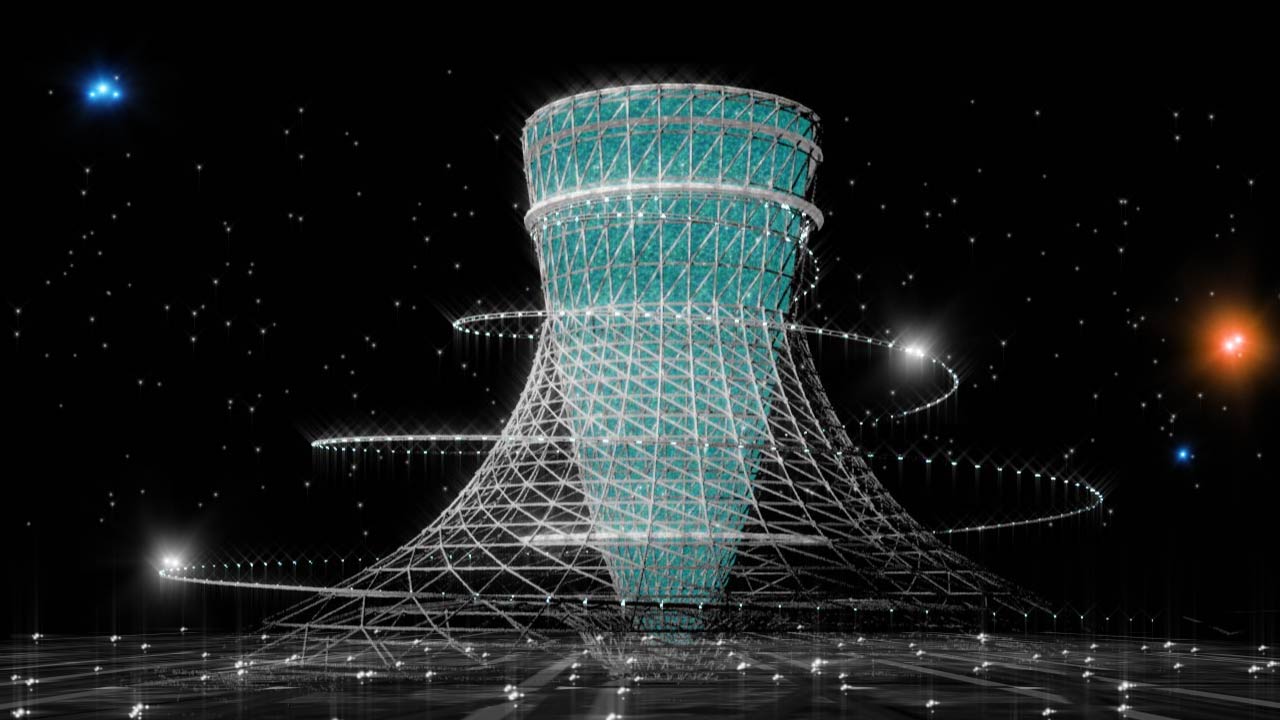
Lunar Glass(Takuya Ono) 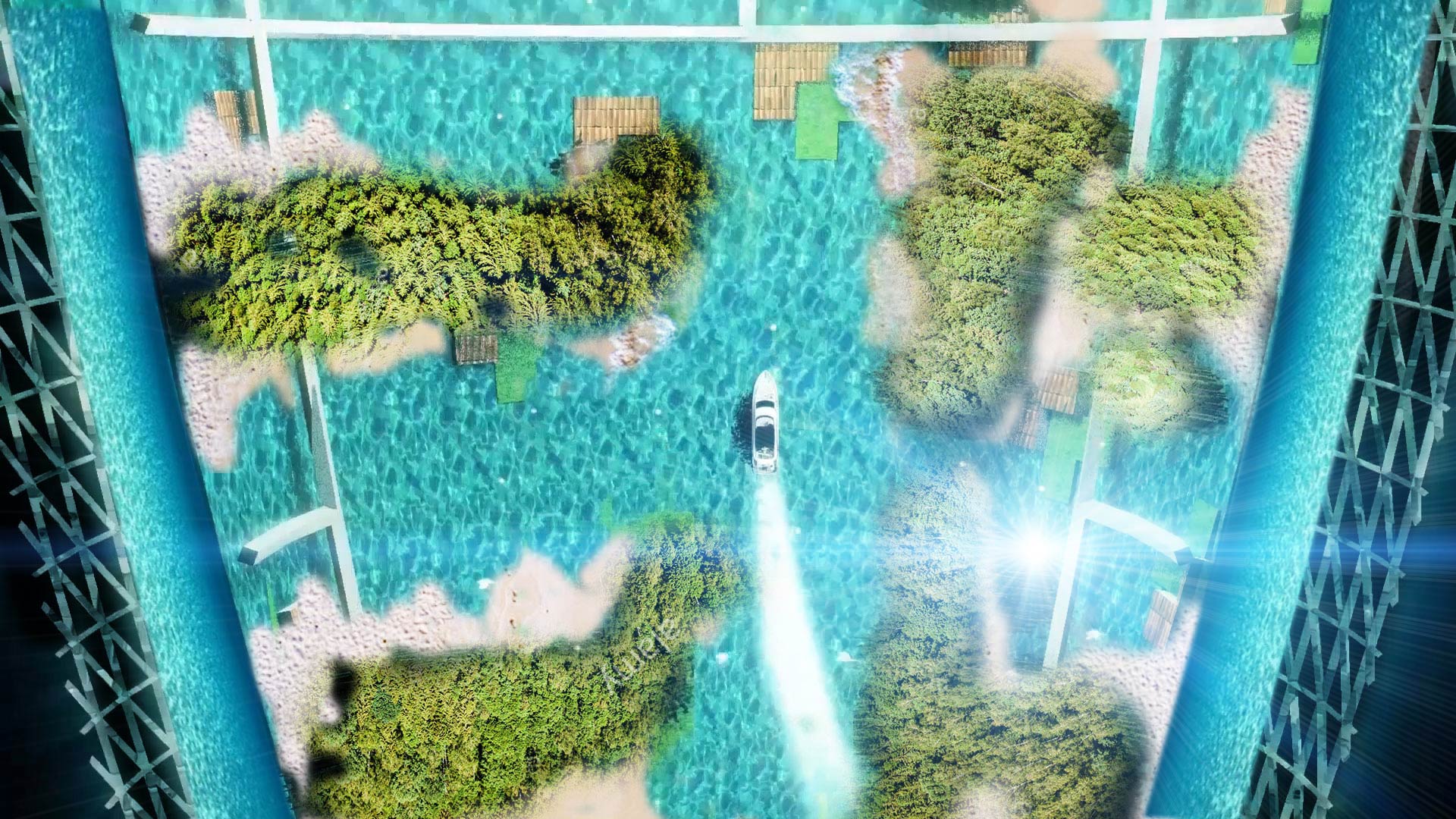
Artificial Ocean in Lunar Glass(Takuya Ono) 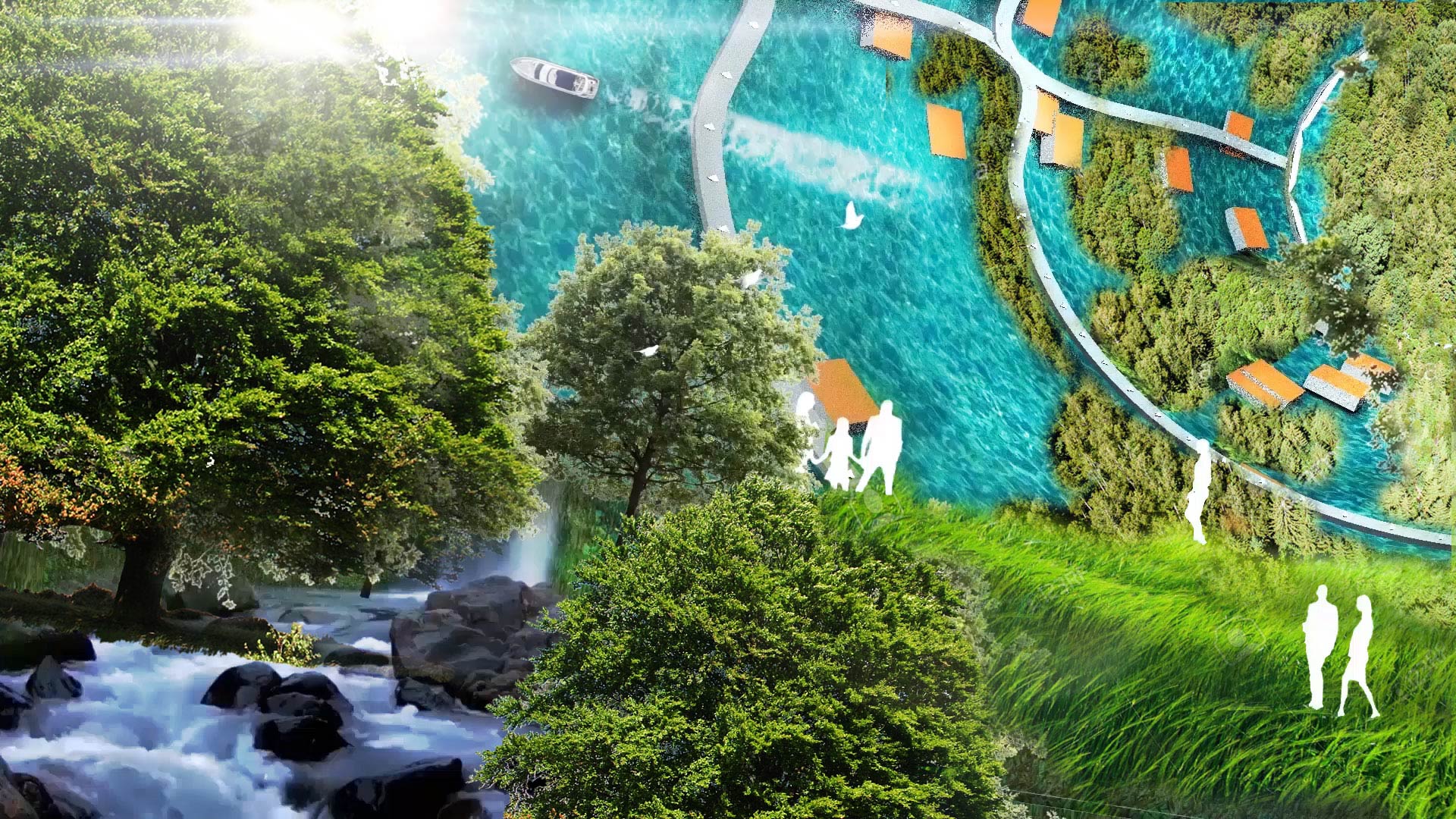
Inside of Lunar Glass (Takuya Ono)
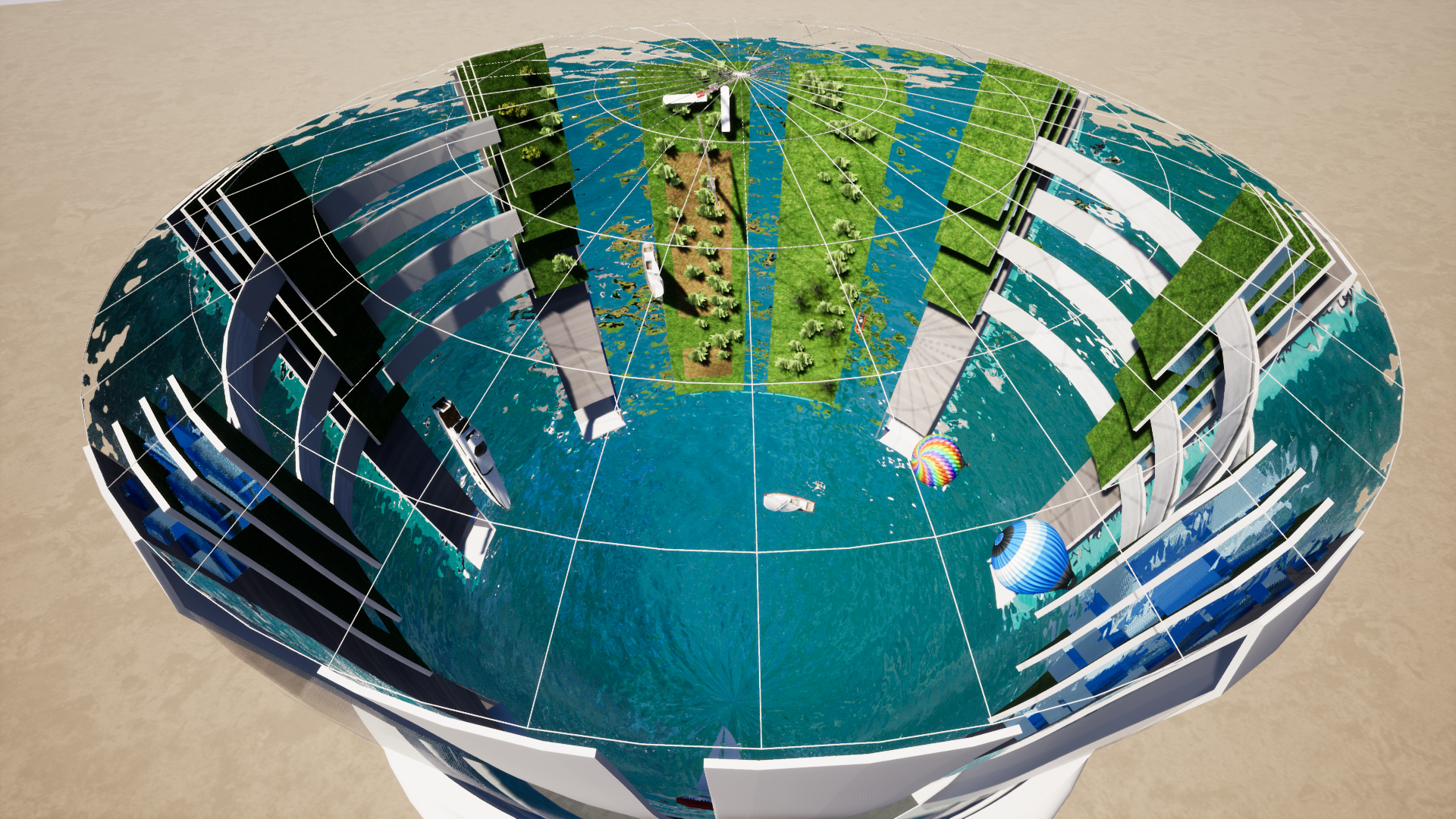
Mars Glass(Takuya Ono) 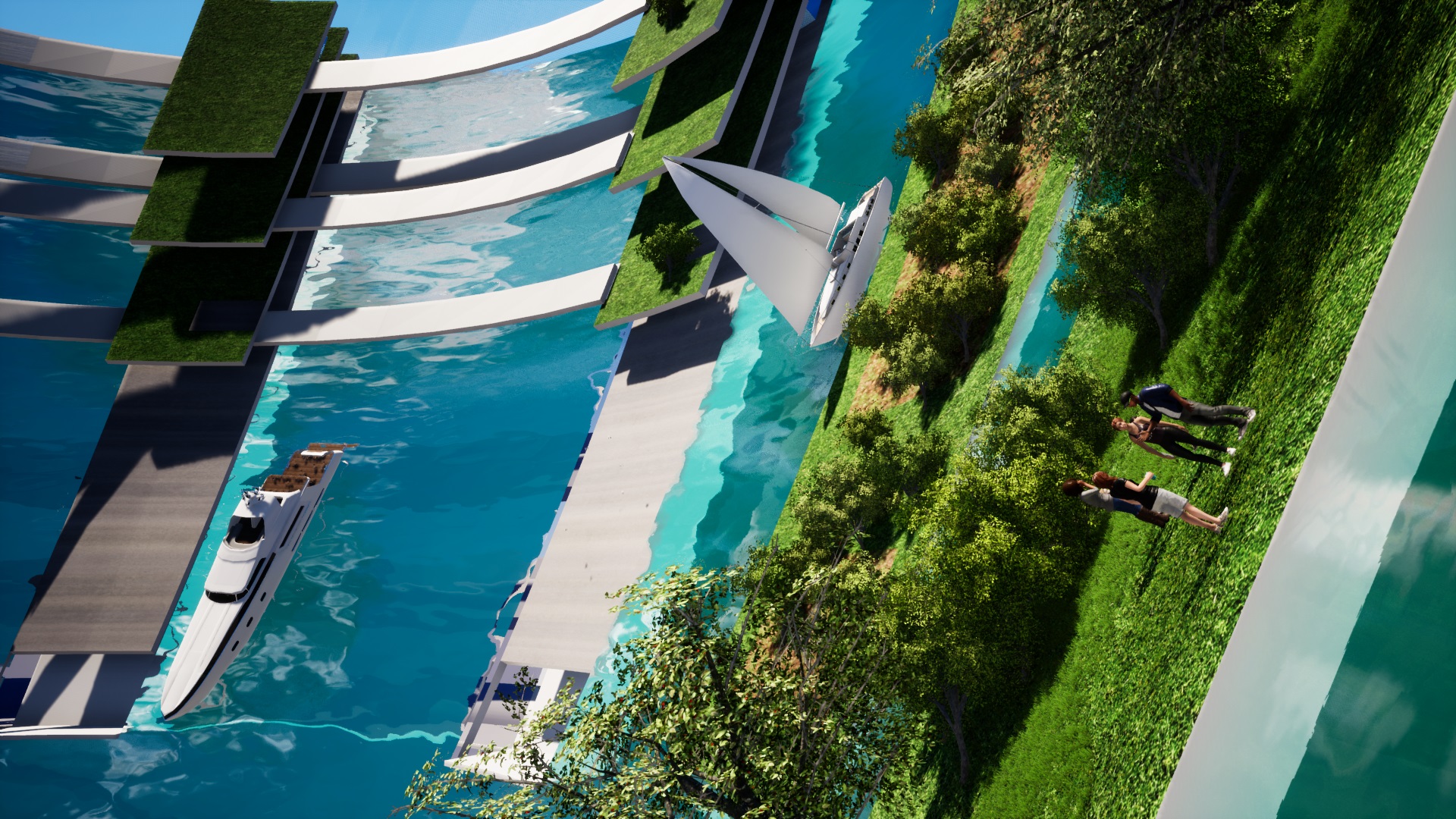
Mars Glass (Takuya Ono) 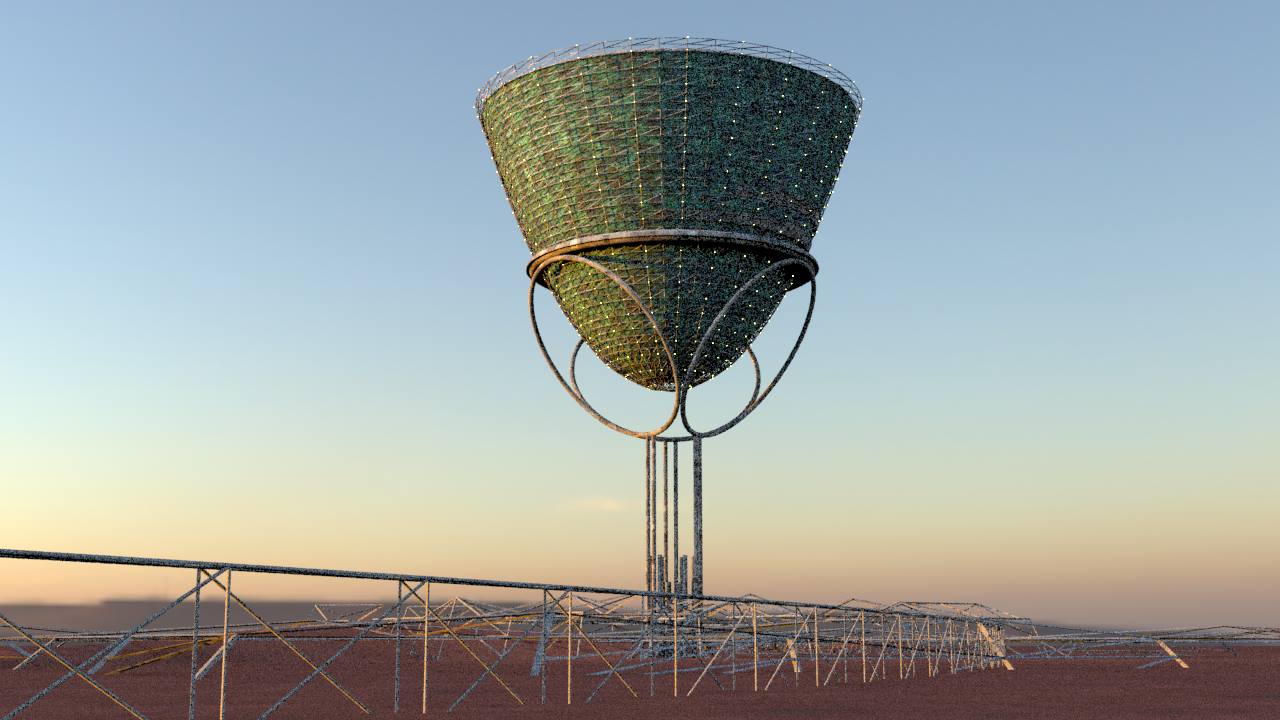
Mars Glass (Takuya Ono)

